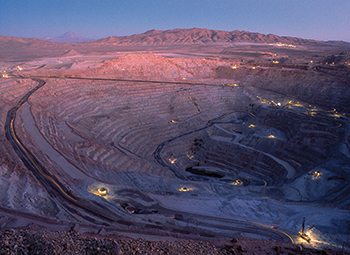
[miningmx.com] – “AFTER a tough year, thoughts of Xmas break couldn’t come soon enough.’ So ended a morning note to clients from Numis Securities, a UK brokerage in early December which neatly summed up how the world’s mining sector regarded 2014. In short, it was a car wreck.
There’s two ways of looking at commodity prices in 2014: the price in dollars and the real rand-adjusted level which reflects the price that South African-domiciled companies receive after accounting for inflation.
Even in real rand terms, gold has dropped by nearly 50% since it achieved a 10-year high in 2011 while platinum also fell to its lowest real price in the last decade with a 68% decline on its highest price in 2008 and a 40% decrease since its 2011 highs. Coal has dropped by 52% from its 2011 high.
The effect of these price drops, added to massive cost pressures faced by South African miners which include above inflation labour costs and administered costs such as the power tariff in winter, was demonstrated in lower profits and balance sheet pressure.
There wasn’t a mining company in South Africa that didn’t have its CFO anxiously pouring over covenant triggers on debt.
According to PwC, total impairments of some 37 Johannesburg-listed mining companies totalled R49bn of which R42.5bn were in the gold sector alone, followed by platinum at R11.7bn.
And of the 37 companies reviewed in the consultancy’s survey “SA Mine’, 18 of them had net book values in excess of market values which means the net asset values of many mining companies was more than the market was prepared to attribute to the company.
The Ebitda margin – which is profit before tax, interest, depreciation and amortisation – was 28% for South Africa’s gold companies in 2014 and a paltry 17% for its platinum firms.
According to Andries Rossouw, PwC’s energy and mining assurance partner, companies need a margin of 30% to 35% in order to pay the cost of debt which is essential especially in long-term businesses such as mining where capital outlay can proceed payback by a number of years. “Margin pressure is threatening the sustainability of the sector,’ he said.
Closures, however, have been few perhaps defeating the wisdom of the aphorism recently cited in a Financial Times article: “When you are in a hole, stop digging’. The question, then, is how long will it be before the mining market recovers?
Unfortunately, there’s no one size fits all answer as different commodities are responding in different ways with aluminium and nickel actually on the rise whilst coal and iron ore continue to struggle.
Said SP Angel in a recent note: “The supernormal profits earned from a period of high iron ore and oil prices have been reinvested in growing volumes. This strategy pursued by Rio Tinto and Vale in iron ore has destroyed the price and ended the era of supernormal profits’.
In copper, however, the outlook is better. “The risk of a deficit in 2017 is great,’ said Walter de Wet, an analyst for Standard Bank.
“We see substantial upside and think that in 2017, copper will trade at $7,000 to $8,000 per tonne,’ he said. Copper is currently trading at $6,490/t on a cash basis on the London Metal Exchange.
Citi, a bank, likened the last four years in the commodity market to the five stages of grief with 2014 representing “acceptance’. Target prices on mining equities had been cut by about 44% over the past three years while generalist interest in the sector had hit “rock bottom’.
However, it believed it was better to call the commodity resurgence earlier rather than later. “While we remain concerned about the long term structural demand story for commodities in China, it would be amiss for us not to recognise the changes that have occurred in the sector,’ it said.
“The FTSE 350 mining has fallen by 45% over this period, secondly the mining companies are reacting through cost-cutting, capital discipline and shareholder alignment, moreover, sentiment is arguably at all-time lows,’ Citi said.
Said Mick Davis in an interview with Miningmx’s The Mining Yearbook in June: “A combination of the fact that the complexity of investment, the retrenchment of growth capital, and declining grades means that we’re probably entering a period of constrained supply.
“For me, it’s just a very simple equation that translates into again a period of sustained rising prices.’
Prices were calculated from January 2014 to December 1.










